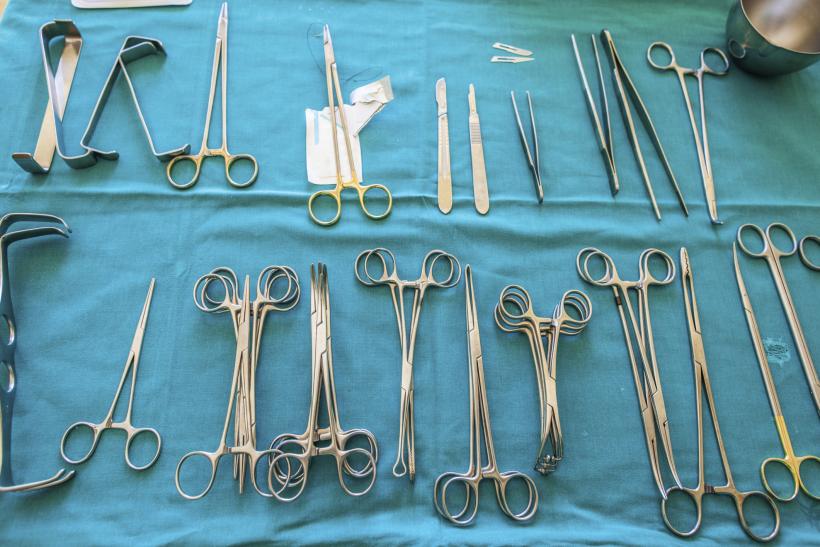
It's a story that reads like dystopic neo-feminist fiction—a tale so sad, so sordid, so blatantly predatory and amoral—you feel it's best relegated to the dusty pages of a novel.
But alas.
According to data from the United Nations, India is responsible for 37% of the world’s female sterilizations; in 2012 alone, 4.6 million women underwent the surgery, having their fallopian tubes cut then tied, fueled by government quotas and financial incentives for doctors to help curb the country's population growth.
Women are often coerced into this decision or driven to attend one of the country's sterilization "camps" out of sheer desperation; each women is paid the equivalent of $10 (about a week's worth of work for an impoverished family) and is subjected to Draconian doctoring. The facilities are filthy and understaffed, the instruments rusted, the doctors harried, spending approximately three minutes on each operation before rinsing their bloody scalpel in a bin of warm water and moving on.
A.K. Das, the surgeon at a clinic outside of Sonhoula explains that he often runs out of anesthetic, forcing him to use a weaker sedative that doesn't render the women properly unconscious, increasing the danger of the operation significantly. Oh, but fret not. He's paid an extra $2 per patient for using the weaker drug.
This keen eye on economics is the driving force behind India's continual decision to subject their countrywomen to systematic sterilization. Rather than educate the lower classes on contraception or provide reproductive rights services—a costly undertaking—they can instead bribe women and doctors to undergo and wield the knife.
While India's central government (including the federal Health Ministry) maintain that "quotas" haven't been mandated since the 1990s, at least 11 women have died on the makeshift sterilization operating tables while another 20 languish in critical condition. According to the state's chief medical offider, Dr. S.K. Mandal, 83 women—all poor villagers under the age of 32—underwent the surgery on Saturday outside Bilaspur city in a bloody blur of 6 hours, promised 600 rupees each—or $10.
After being sent home Saturday evening, more than 24 women were subsequently rushed to the hospital suffering from hemorrhagic shock (blood loss) or blood poisoning. The Chief Minister of the surrounding state, Raman Singh, has gone on record saying, "it appears the incident occurred due to negligence" and has suspended four government doctors as well as the district's chief medical officer. Each of the victims' families will also receive $6,600 in, um, damages.
Contrary to the rumored banning of government sterilization quotas countrywide, Dr. Mandal said that just in his district of Bilaspur alone, he was poised to perform surgery on 12,000 women.
Mandal said the state's surgeons met Tuesday night to discuss whether to continue the state's sterilization schedule, with a target of 180,000 for the year ending in March, set by the central government. He said the yearly quota for the Bilaspur district alone was 12,000.
"It was almost inevitable, given the unsafe, unethical and unhygienic conditions that persist throughout India in these camps. You might find that there is no electricity, there is no running water, there is not enough staff in these facilities. They won't have things like blood, in case someone hemorrhages . . . they won't have enough gloves or aprons . . . I think that [11] is a gross underestimate of the actual number of deaths. We haven't seen this much carnage in the wake of a sterilization camp and it is incredibly devastating because activists throughout India have been ringing the bell on this for years." — Kerry McBroom, director of the Reproductive Rights Initiative at the Human Rights Law Network in New Delhi, CNN.com

Currently just over half of India's population reports using any kind of birth control and while societal "promotion" of sterilization is ostensibly aimed at everyone, vasectomies—of course—make up a mere 1% of all the surgeries countrywide.
Socio-culturally the notion of a man being castrated simply won't fly.
But apparently the notion of women being systematically coerced into oft-deadly sterilizations is one that India is all too comfortable with.






